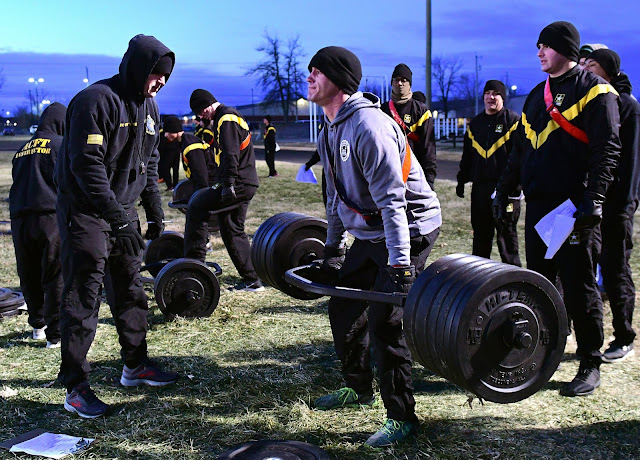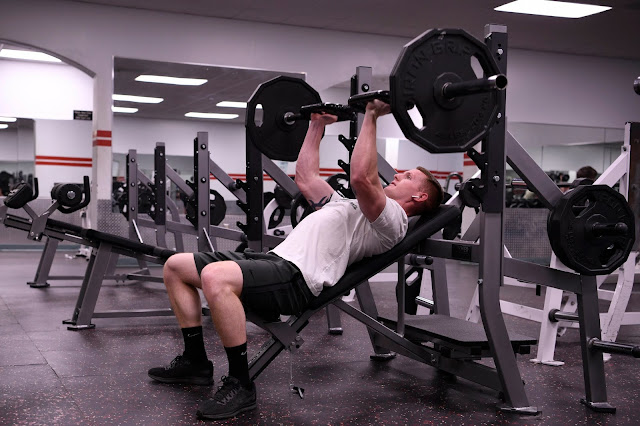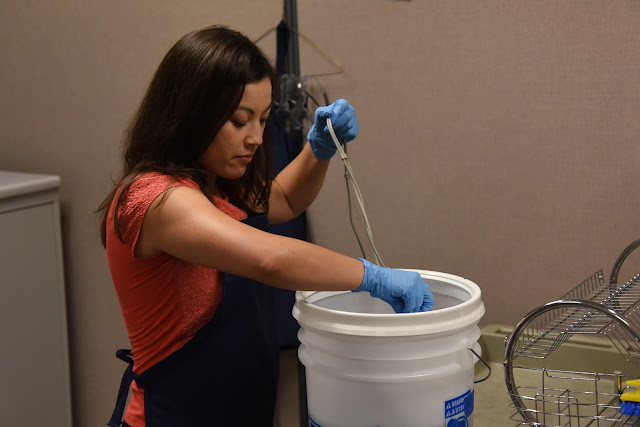Soldiers from 19th Engineer Battalion participate in evaluation phase of new combat fitness test
Story by Eric Pilgrim
Fort Knox
FORT KNOX, Kentucky – Soldiers from 19th Engineer Battalion braved sub-freezing temperatures Jan. 29-31 to participate in training sessions sponsored by the U.S. Army Center for Initial Military Training that are designed to help Army leaders evaluate and improve the new Army Combat Fitness Test.
Army Reserve trainers gathered early Jan. 29 at Flipper Field behind Natcher Physical Fitness Center to run about 20 Soldiers from 19th through the six-event test. After a short block of instruction by the trainers, many Soldiers whooped and hollered as others tackled the obstacles.
“The testing piece is relatively intuitive, and our Soldiers picked up on that very quickly,” said Capt. Kyle Maxwell, an assistant S3 plans officer at 19th ENG Battalion. “I don’t think there’s going to be too much headache as far as implementation of this new style of physical fitness assessment.”
The battalion is one of 63 active duty units across the Army participating in the initial testing phase of the ACFT.
On hand to watch the training, Command Sgt. Maj. Edward Mitchell, senior enlisted advisor for USACIMT, said he and other leaders are responsible for ensuring all the data collected is accurate and thorough. USACIMT Commanding General Maj. Gen. Malcom Frost and Mitchell have been traveling around to each participating unit to observe the training up close and personal.
“I’ve come here to see how the training is executed and how’s it going, and then get feedback from each one of the Soldiers on how they like it so far,” said Mitchell. “So far, from what I’ve seen since I’ve been going around, all the Soldiers love the ACFT because it tests and strengthens your entire body.”
Mitchell said 19th was chosen for this phase because of its unique mission requirements.
“We have combat arms battalions, we have combat service support battalions, we have basic training units, we have medic units – we have every type of battalion that we would have in the Army from the 63 as well as reservists and National Guard units,” said Mitchell. “When we get this field testing done, we’ll have data from each of these battalions.”
During the testing, trainers walked the Soldiers through the ins and outs of each event, including the standards and any potential pitfalls for failing an event. The Soldiers executed each event to standard, starting with the three-repetition maximum deadlift before moving to the standing power throw with a 10-pound medicine ball, hand-release pushups, sprint-drag-carry, and the leg tuck on chin-up bars before finishing up with the only event carried over from the traditional Army Physical Fitness Test — the two-mile run.
After finishing up her run, Sgt. Nicole Iwaniusz, from 502nd Multi-Role Bridge Company, said the test was her first look at the future of physical fitness.
“It’s definitely challenging; it works your body in whole other way. It gives you like a full body workout,” said Iwaniusz. “It makes sure all your muscles are engaged, and that you’re in physically good shape in all aspects of it, so it definitely will help prevent injuries in the future.”
As part of the initiative, the battalion recently received a physical therapist, nutritionist and two strength coaches to help Soldiers turn the corner on combat readiness under the new program.
Maxwell said many younger Soldiers as well as those who have been in much longer have only so much knowledge and tolerance for change. The new fitness program, which focuses holistically on injury prevention, nutrition and training, helps address this.
“Because of the education piece, we’re going to be able to get people to better understand why they’re doing what they’re doing in terms of physical fitness, and what purpose it serves toward making them more combat ready.”
Despite all the changes, Maxwell said Soldier feedback so far has been a resounding thumbs up.
“It’s a very large undertaking because this is a really big cultural shift in the Army,” said Maxwell, “and it’s definitely one for the positive.”




Comments
Post a Comment